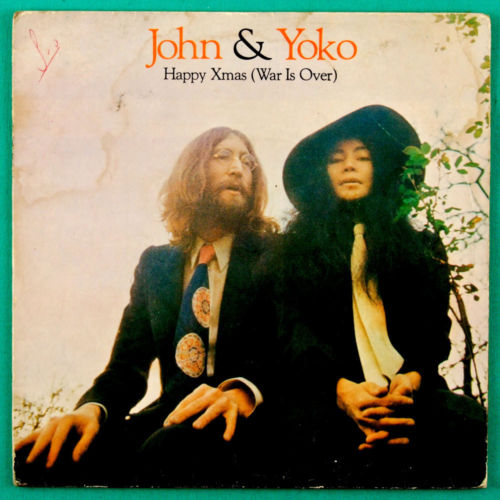The Beginning of the Classic Bowie Era
“The Rise and Fall of Ziggy Stardust and the Spiders from Mars made David Bowie a superstar but, before that, Hunky Dory made him an artist.” CM It is a “quantum leap from his previous material.” AD It “is artistically the album that made the breakthrough for Bowie” AD and “the beginning of the classic Bowie period.” AD He said, “The record provided me, for the first time in my life, with an actual audience.” CM Rolling Stone called it “his first great album.” 500
The Seeds for Ziggy Stardust
This album was notable for being “the first to feature the line-up that would become the Spiders from Mars.” CQ That included guitarist Mick Ronson, bassist Trevor Bolder, and drummer Woody Woodmansey.
This is “suggestive of a dress rehearsal with Ziggy waiting impatiently in the wings for his understudy to vacate the stage.” PR Hunky Dory “is not a concept album, but the concepts within would eventually solidify and manifest in the character of Bowie’s spaceman and perhaps even in his personal philosophies.” CQ “The themes and ideas scattered throughout the songs’ lyrics and arrangements set the stage for not only Ziggy Stardust, but for much of Bowie’s output in the ’70s.” CQ
The Bowie Identity
“At a moment when no one knew whether David Bowie was a transvestite, provocateur, folk singer or space alien,” TL “the then 24-year-old released an album that slyly capitalized on the confusion.” TL Up to this point in his career he’d showcased an ability to tackle “a kaleidoscopic array of pop styles” AM and experiment “with a number of personas” PR including guises as “a mod, a folk singer, [and] a jazz buff.” CM His previous album, The Man Who Sold the World, had an “almost heavy-metal sound;” TB Hunky Dory saw Bowie return to “the acoustic guitar-based singer-songwriter sound of his earlier work.” TB
“What elevated the album…was Bowie’s newly developed and highly ambitious capacity for bridging the gap between highbrow and lowbrow art forms.” TB He “blends pop, dancehall, art-rock and folk for his most varied effort.” RV It “was a visionary blend of gay camp, flashy rock guitar and saloon-piano balladry.” 500
“On the surface, such a wide range of styles and sounds would make an album incoherent, but Bowie’s improved songwriting and determined sense of style” AM give Bowie the distinction of “inventing – and perfecting – a new style of rock & roll glamour.” 500 He created “a touchstone for reinterpreting pop’s traditions into fresh, postmodern pop music.” AM
As Bowie said, “I wasn’t an R&B artist, I wasn’t a folk artist, and I didn’t see the point in trying to be that purise about it. What my true style was is that I loved the idea of putting Little Richard with Jacques Brel and the Velvet Underground backing them. What would that sound like? Nobody was doing that.” CM
The Players
“The playing and production and arrangements were all assured and professional.” AD “Mick Ronson came into his own…proving himself an adept arranger for strings as well as a fine guitar player. Keyboard superstar and then top session man Rick Wakeman provided fine piano and keyboard flourishes.” AD The latter’s “cabaret piano…dominate[s] the sound of the album.” AM
The Songs
Here’s thoughts on individual songs.
“Changes”
“The revamped Tin Pan Alley of Changes,” AM which “proved he could write a great pop song about who he really (maybe) was.” TL It became “a manifesto that Bowie has carried ever since.” CM
“Life on Mars?”
Bowie also crafted “the soaring Life on Mars?” AM in which he is “flexing his muscles as a songwriter.” CM It recalls “the theme of Bowie’s signature tune ‘Space Oddity,’ but here it tells the story of a girl in suburbia hoping that there is life elsewhere because it sure isn’t here.” CM
“Song for Bob Dylan” and “The Bewlay Brothers”
On Song for Bob Dylan, Bowie delivers “a powerful examination of the use of an alter ego to create art.” RV That song and The Bewlay Brothers were amongst Bowie’s “more folky songs.” AM Bowie wrote the latter about his brother Terry, who was bipolar and Bowie’s first idol. CM
“Oh! You Pretty Things” and “Queen Bitch”
He also “inflects his words with a Lou Reed sensibility, as on Oh! You Pretty Things, a rallying cry for homosexuality.” RV It was also “a nod to the British ‘60s beat group and was originally given to Peter Noone of Herman’s Hermits. Here Bowie reclaims it.” CM
Bowie also makes “a direct sound connection to the Velvet Underground with Queen Bitch.” CQ Such songs “clarified his earthbound ambition to be a boho poet with prodigal style.” TL That song and “Song for Bob Dylan” have been described as “unabashed fan letters.” CM
“Andy Warhol”
There’s also “the dark acoustic rocker Andy Warhol,” AM a tribute to the New York artist who’d championed the Velvet Underground. Bowie said of Warhol’s reaction to the song” “he hated it. Loathed it.” CM
“Quicksand”
In addition to songs that celebrated Bowie’s contemporaries like Dylan, Reed, and Warhol, Bowie also serves up his “Neil Young homage Quicksand.” AM
“Kooks” and “Fill Your Heart”
Bowie also “again flirted with Anthony Newley-esque dancehall music (Kooks, Fill Your Heart).” AM The former “was a letter welcoming the arrival of his newborn son and Bowie’s attempt to explain to the boy about his kooky parents. It’s probably the happiest Bowie has ever been on record.” CM
Notes: The 1990 Rykodisc reissue added the unreleased 1971 recording “Bombers,” and alternate versions of “The Bewlay Brothers,” “Quicksand,” and “The Supermen” (the latter originally on The Man Who Sold the World).
|










